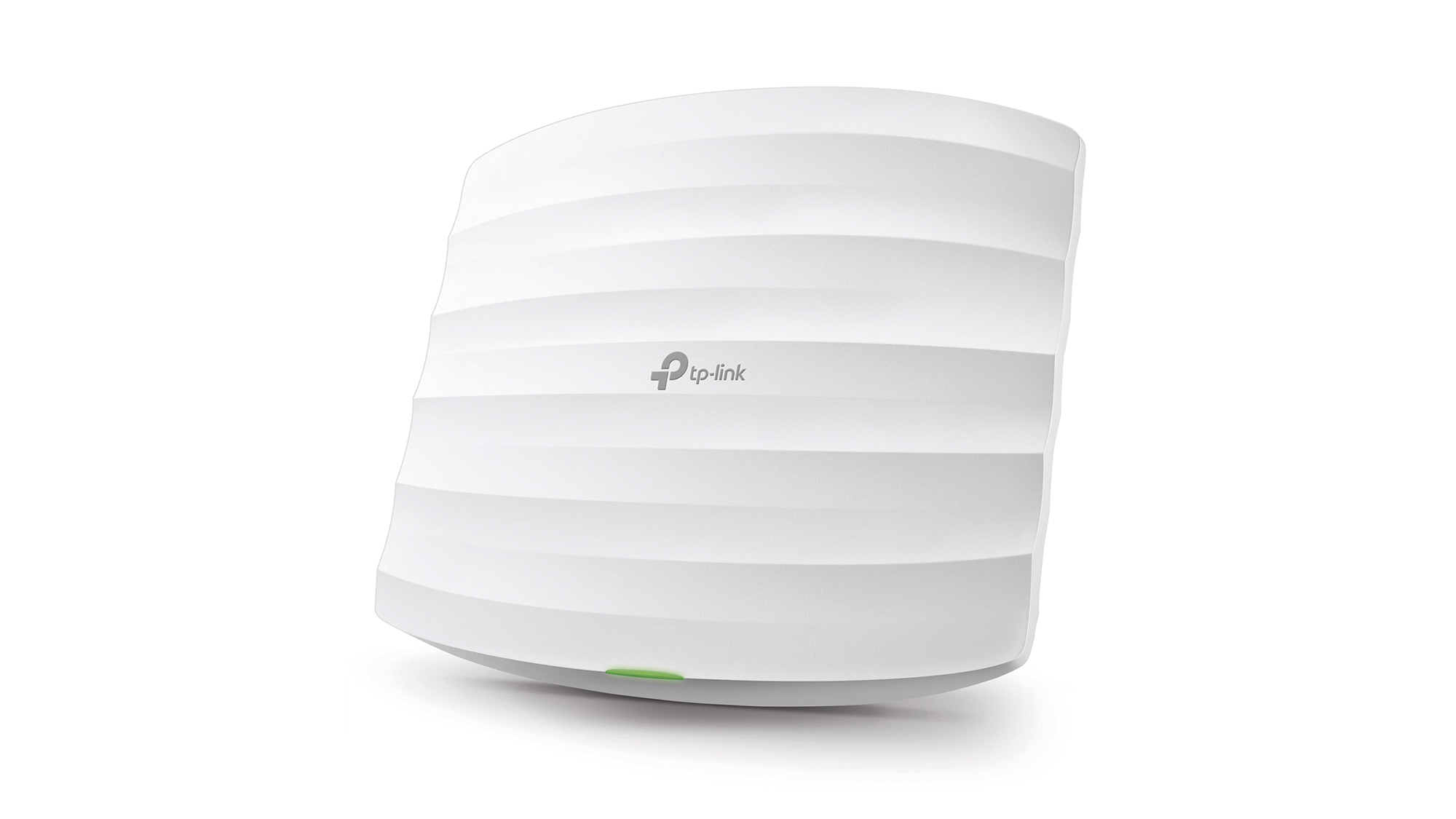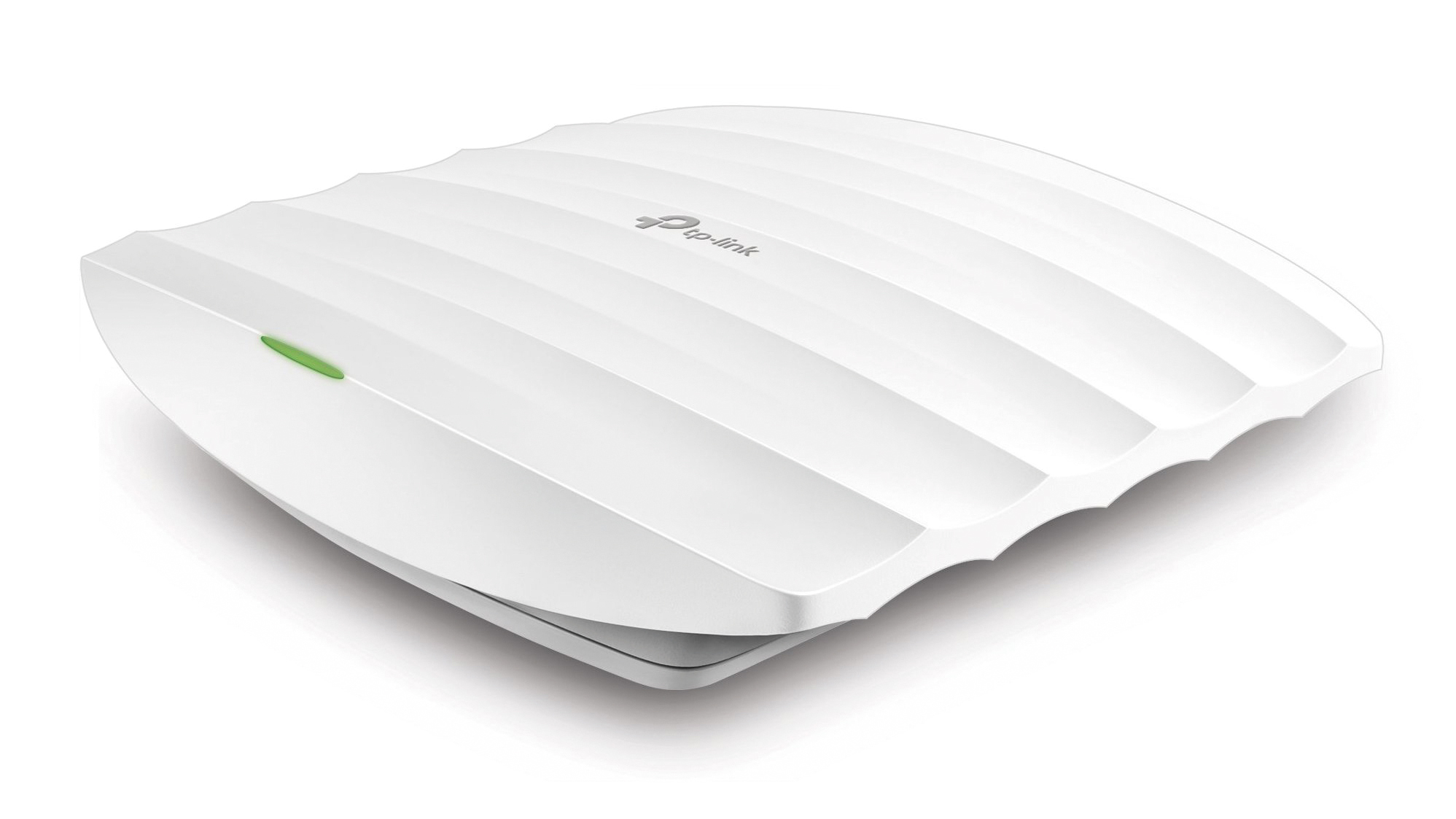TP-Link Omada EAP225 V3 review: Scalable wireless at a giveaway price
A budget price and free management software gives SMEs the best of both wireless worlds


TP-Link’s Omada EAP225 V3 delivers good performance and coverage, and works seamlessly with the free Omada Controller software allowing SMBs to move to central management without worrying about any extra expense.
-
+
Snappy speeds; Good range; Strong management features; Great value
-
-
Defaults to unsecured SSIDs

SMEs looking to build a powerful wireless network on a shoestring will love TP-Link's Omada EAP225 V3 as this AC1350 access point (AP) only costs a shade over 50. Even better, TP-Link includes its Omada Controller software as a free download so they can run the AP in standalone mode and swap over at any time and centrally manage multiple TP-Link APs from one web console.
There are no compromises on business features either, as the EAP225 V3 supports concurrent 2.4GHz and 5GHz operations. More importantly, it uses MU-MIMO (multi user multiple input multiple output) technology to increase the number of lanes on your wireless highway allowing it to support a large user base without causing congestion.
The AP has three internal aerials for the 2.4GHz and two for the 5GHz radios while its single Gigabit port requires an 802.3af PoE source. Worry not if you don't have access to PoE as TP-Link includes a small injector module in the box.
The AP is a cinch to deploy in standalone mode and on first contact, its web console sensibly asked us to supply a new username and password after which it removed the default admin account. Be careful when you get it running as the AP defaults to both radios enabled with their SSIDs unsecured.
It took seconds to remedy this by applying an encryption scheme on both SSIDs. The AP supports up to eight SSIDs on each radio, each with their own security profile - and a built-in scheduler can be used to turn selected SSIDs on or off at specific times.
During SSID creation, we applied an authentication scheme, decided whether to mask or broadcast it and activated isolation to stop wireless clients on the same SSID from seeing each other. Secure guest wireless networks are easily created; the AP can redirect users to its web portal which requests a global password and presents them with a custom acceptable use policy.

Real world performance is good with our Netgear AC1200 equipped Windows 10 desktop returning a close range 60MB/sec whilst copying a 2GB file to a server on the LAN. To test coverage, we used the SweetSpots wireless performance app on our iPad and managed to get 43m down the main building corridor before it lost the signal.
We had no problems testing the Omada Controller software, and got it installed on a Windows 10 desktop in two minutes. Prior to AP management, we imported a map of our offices so we could use the heatmap feature to plan coverage and then created an initial set of secure SSIDs for both radios.
A pop-up menu at the bottom of the web console provides quick access to features such as guest portals, scheduled power cycles and options to set upload and download rate limits for each SSID. The software also has QoS preconfigured so it'll apply the same traffic prioritisations as provided by the standalone AP.
For testing, we installed two EAP225 V3 APs as well as an Omada EAP225 Outdoor AP, and to test legacy TP-Link products, we also connected an older AuraNet EAP330 V1 AP. The software immediately spotted all four APs as soon as they came online and classed them as 'pending'. To provision an AP, you'll need to 'adopt' it after which it takes all wireless settings from the software and disables its local web interface.
Once provisioned, the member APs present all SSIDs so clients connect to the nearest one and can roam across them as they move around. The statistics page provides graphs, tables and charts of APs, SSIDs plus total wireless traffic and you can use the 'Quick Look' option to quickly spot bandwidth-hungry users.
SMEs that want a secure, scalable wireless network at a giveaway price will love TP-Link's Omada EAP225 V3. It delivers good performance and coverage and works seamlessly with the free Omada Controller software allowing them to move to central management without worrying about any extra expense.
Verdict
TP-Link’s Omada EAP225 V3 delivers good performance and coverage, and works seamlessly with the free Omada Controller software allowing SMBs to move to central management without worrying about any extra expense.
AC1350 11ac wireless AP
Concurrent 2.4/5GHz radios
Gigabit
802.3af PoE
5 internal aerials (3 x 2.4GHz, 2 x 5GHz)
Wall/ceiling mount
PoE adapter included
205 x 182 x 37mm (WDH)
Web browser management
TP-Link Omada Controller Software included
Lifetime warranty
Get the ITPro daily newsletter
Sign up today and you will receive a free copy of our Future Focus 2025 report - the leading guidance on AI, cybersecurity and other IT challenges as per 700+ senior executives
Dave is an IT consultant and freelance journalist specialising in hands-on reviews of computer networking products covering all market sectors from small businesses to enterprises. Founder of Binary Testing Ltd – the UK’s premier independent network testing laboratory - Dave has over 45 years of experience in the IT industry.
Dave has produced many thousands of in-depth business networking product reviews from his lab which have been reproduced globally. Writing for ITPro and its sister title, PC Pro, he covers all areas of business IT infrastructure, including servers, storage, network security, data protection, cloud, infrastructure and services.
-
 Cleo attack victim list grows as Hertz confirms customer data stolen – and security experts say it won't be the last
Cleo attack victim list grows as Hertz confirms customer data stolen – and security experts say it won't be the lastNews Hertz has confirmed it suffered a data breach as a result of the Cleo zero-day vulnerability in late 2024, with the car rental giant warning that customer data was stolen.
By Ross Kelly Published
-
 Women show more team spirit when it comes to cybersecurity, yet they're still missing out on opportunities
Women show more team spirit when it comes to cybersecurity, yet they're still missing out on opportunitiesNews While they're more likely to believe that responsibility should be shared, women are less likely to get the necessary training
By Emma Woollacott Published
-
 OpenAI wants developers using its new GPT-4.1 models – but how do they compare to Claude and Gemini on coding tasks?
OpenAI wants developers using its new GPT-4.1 models – but how do they compare to Claude and Gemini on coding tasks?News OpenAI says its GPT-4.1 model family offers sizable improvements for coding, but tests show competitors still outperform it in key areas.
By Ross Kelly Published